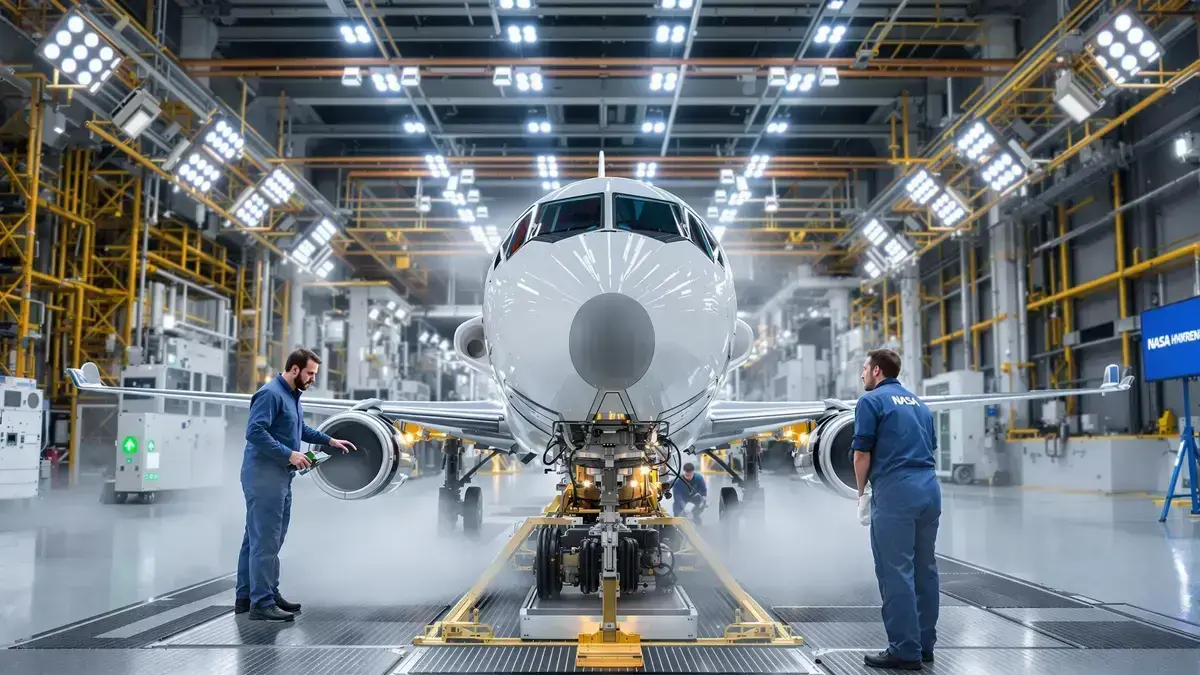NASA is currently testing a hybrid engine powered by hydrogen, a potentially revolutionary innovation for sustainable aviation. While air travel is responsible for about 2.5% of global CO2 emissions, previous efforts to reduce emissions have been deemed insufficient. Developed under the Hy2PASS project, this engine combines a hydrogen fuel cell with a gas turbine, aiming to transform the aviation landscape with polluting emissions limited to just the production of water.
Key Information
- NASA is developing a hybrid hydrogen engine to reduce aircraft emissions.
- Air travel accounts for approximately 2.5% of global CO2 emissions.
- The Hy2PASS engine produces water as its only polluting emission.
- Aiming for sustainable aviation through technical innovations for the aerospace industry.
NASA Tests a Hybrid Hydrogen Engine
NASA has recently launched promising tests for an innovative hybrid hydrogen engine, designed to significantly reduce emissions from aircraft. This initiative takes place in a context where air travel represents nearly 2.5% of global CO2 emissions, a concerning figure that necessitates sustainable solutions.
A Disturbing Finding About Aviation Emissions
Despite previous efforts to mitigate the environmental impacts of the aviation sector, reductions in emissions remain elusive. The industry faces a stalemate, and intensive research into sustainable aviation has become increasingly necessary. These efforts focus on technical innovations that could transform the aviation landscape.
The Hy2PASS Engine in Detail
The engine, named Hy2PASS, stands out due to its use of a hydrogen fuel cell coupled with a gas turbine. This unique architecture allows for a decoupling of the compressor and turbine, optimizing the overall energy efficiency of the system. This configuration could revolutionize how aircraft are powered, enhancing their performance while minimizing environmental impacts.
The Mystery of Cats’ Spinning Finally Uncovered by Science: Here’s What You Need to Know
An Emission Without Pollution
One of the most ambitious features of the Hy2PASS engine is its ability to produce water as its only polluting emission. This means it can operate with virtually no environmental impact, a feat that could have profound implications for the future of aviation. This technological advancement strengthens the dialogue on ways to align air travel with global ecological goals.
Phase I of the Project: Validation and Optimization
Currently in Phase I, this project aims to validate the concept and optimize the mission trajectories. This crucial step is essential for the future development of the engine and for assessing its potential under realistic conditions. The results of these preliminary tests will be decisive for gaining investor and institutional confidence in this technology.
Toward Clean Hydrogen Aviation
The potential for clean aviation powered by hydrogen seems increasingly achievable in the near future. NASA, as a key player in this revolution, is working to meet the needs of the modern aviation industry while addressing the climate imperative. The innovations we observe could redefine aviation standards, paving the way for a future where flying does not equate to environmental harm.

